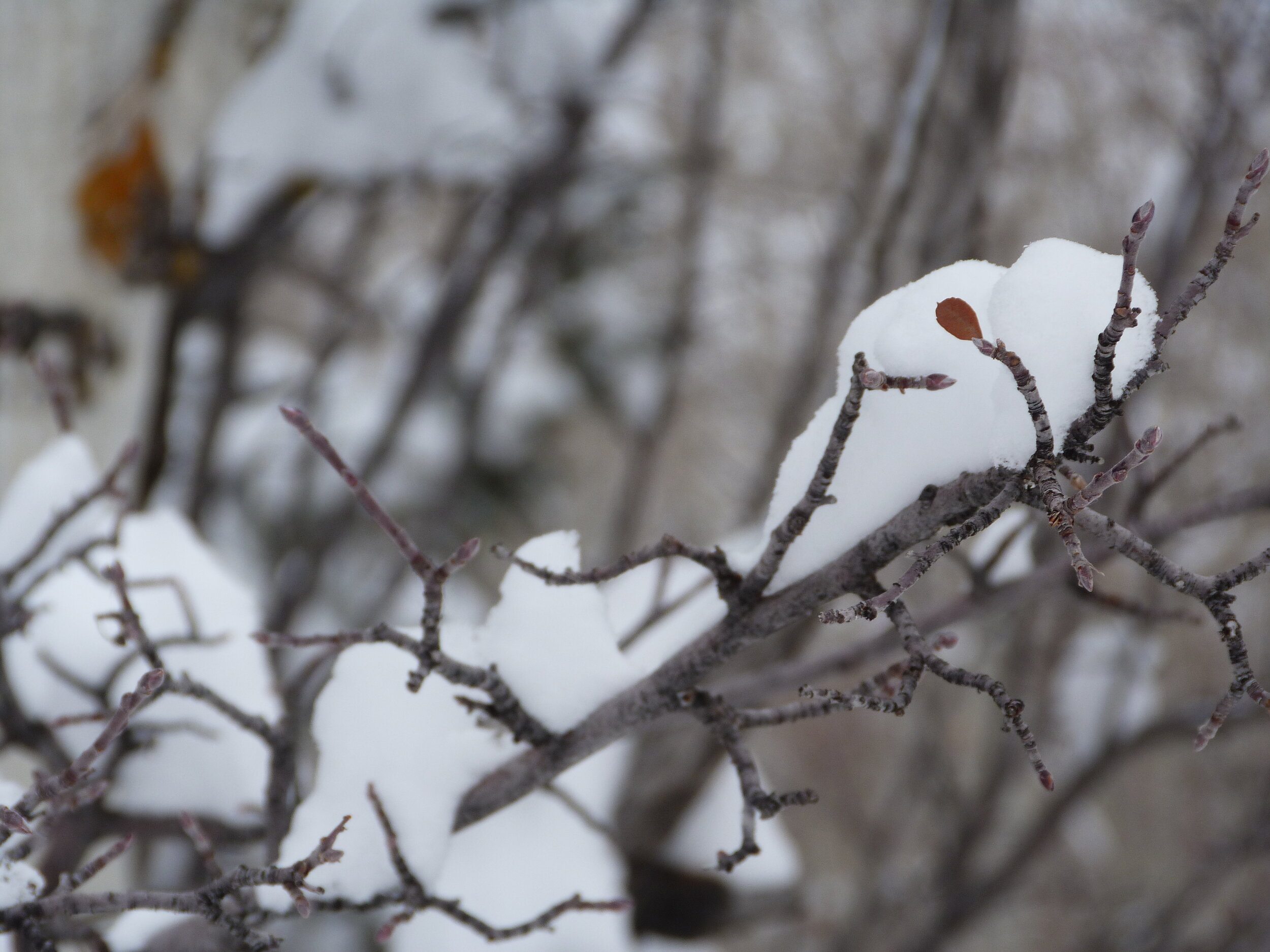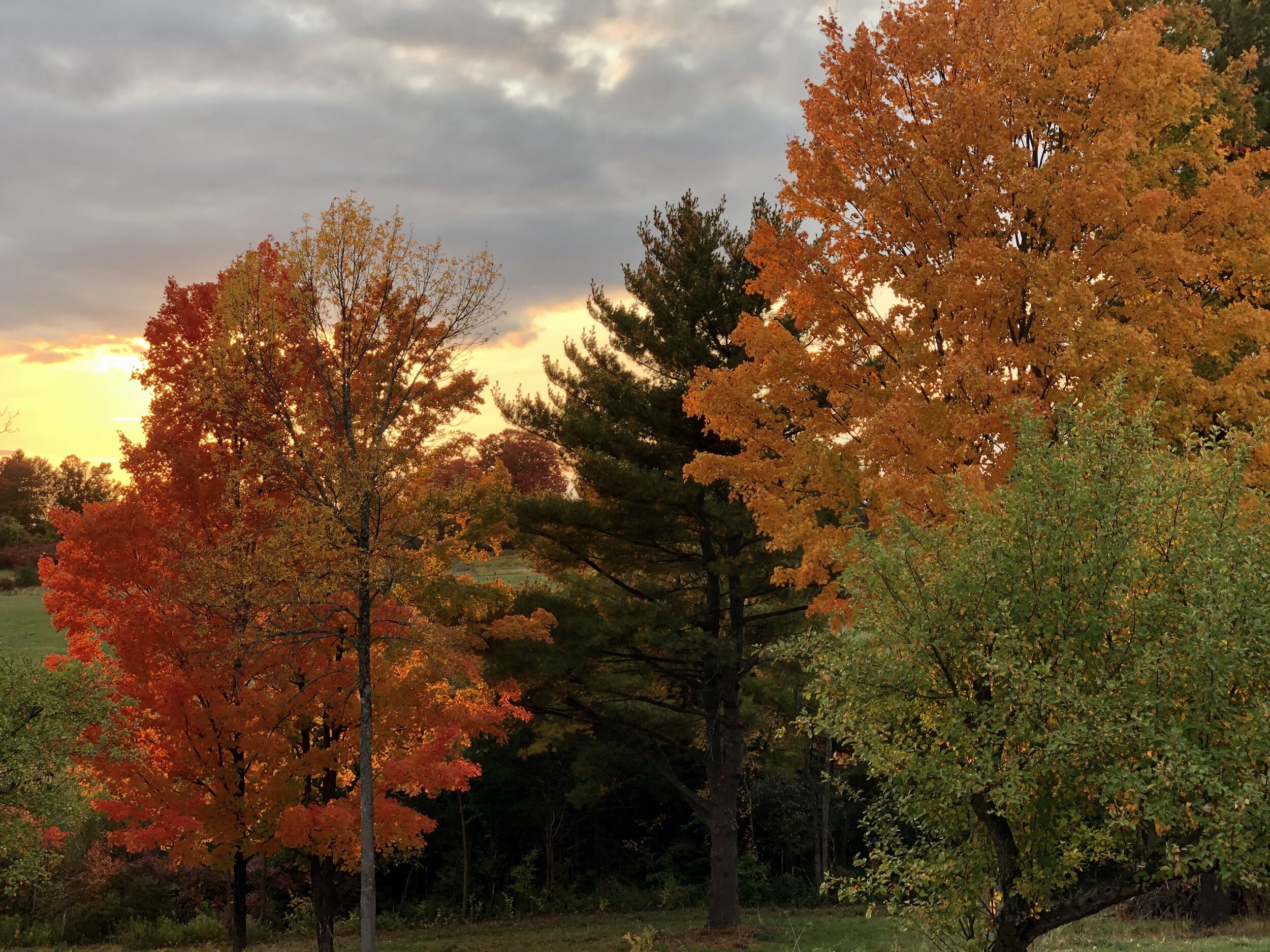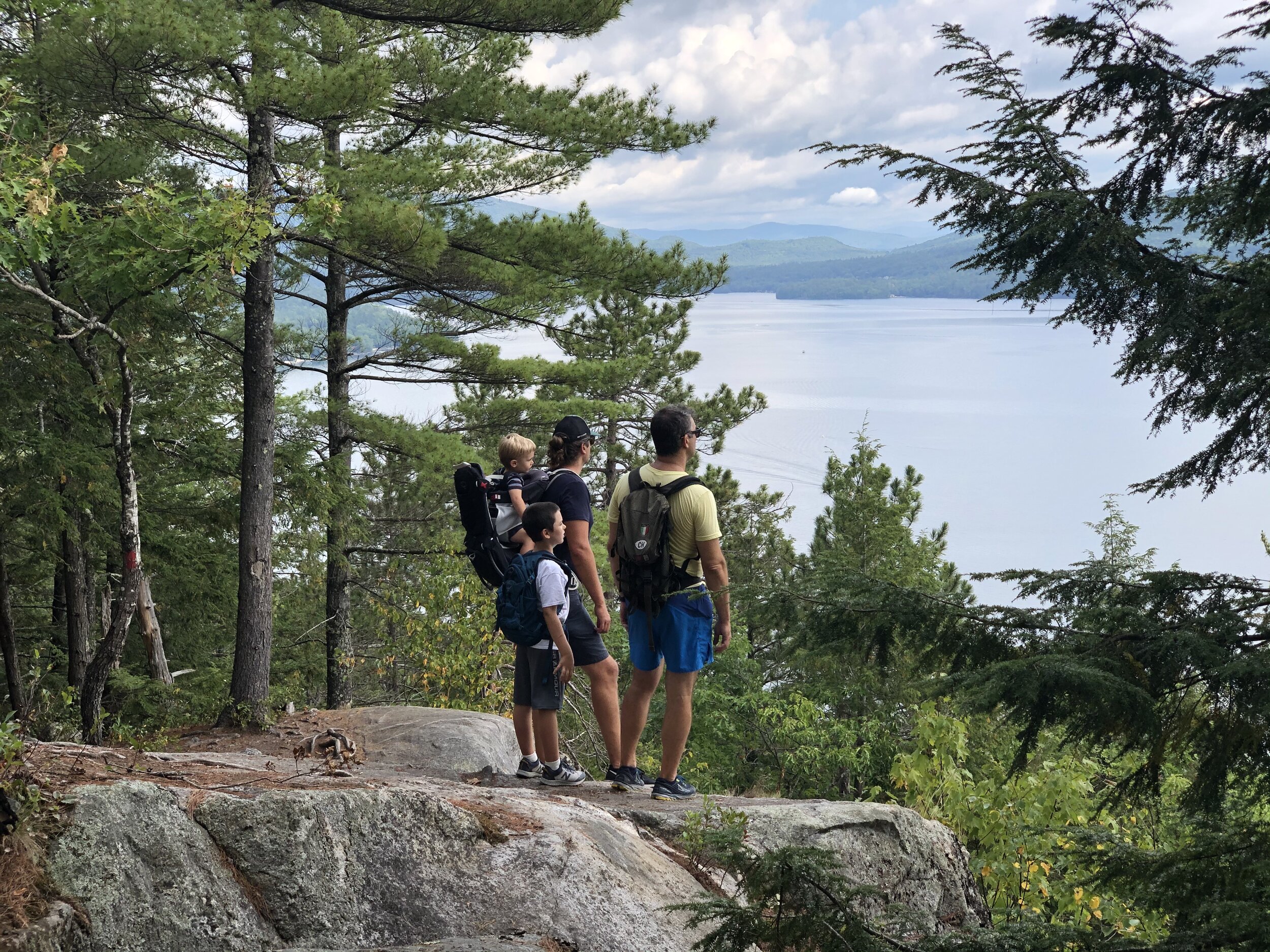I find myself welling up with tears around this time of year whenever I let Christmas in. Always, when I play carols that I used to hear when my mother placed her carefully stored vinyl records from Kings College onto the small record player in her study. As far back as I can remember, each year we would go to my uncle’s house every Sunday in Advent and sing carols with my cousin Ellie playing the piano and leading us all. There was a tree with real candles, an antique, sparkling music box, large, round, and sturdy at the bottom of the tree beside a small creche. Another world and time that I can conjure up just by hearing the sweet voices singing these carols now, on this gray, cold morning in our Vermont house, with only me sitting here remembering and writing.
I was lucky to be my mother’s companion growing up. My sisters and my brother were much older, in their teens and in college by the time I was six. One of my mother’s friends used to tell me, “I always wondered what such a small child could appreciate in the museum when I watched you and your mother climb the big, wide steps, hand in hand, to visit the St. Louis Art Museum.
But I was enchanted from the very beginning. Over the years I visited many museums with my mother who loved and knew art history, often standing before Renaissance paintings of the Nativity by Fra Angelico, Botticelli, or Ghirlandaio. She would say something like this, “Look at how the mother gazes at her baby, the tenderness. It is a beautiful story of a star guiding the way, a humble birth, animals and creatures gathered around. It holds the beauty and mystery of every birth, the hope at the birth of every child. The light in the darkness at this time of year. It is a timeless story.”
As far as religion goes, my mother became as much a Buddhist as a Christian, and fortunately for me, I learned to love mindfulness and meditation and the example of the awakened Buddha from her as well as the Christmas Story and the example of goodness and light, justice and courage lived by the Christ Child.
Student made creche, circa 1980
When I taught art at Stowe Elementary School in Vermont, early on in my career, the sixth grade and I made a terra cotta creche. Each child made a figure or an animal, a shepherd, a wiseman, a sheep, or a cow. Rather than take it all apart, I decided with their agreement, to bring it home all in one piece. It is a treasured part of Christmas for me to unwrap each figure and assemble it. I look forward to lighting candles all around the scene each evening and to sharing the child made creche with family and friends.
A recent sweet memory is of the pop up Christmas Pageant at our Middlebury Unitarian Church in 2016 when our grand daughter, Delilah, at age two, chose to be a sheep, all by herself. She just put her hand up when asked if there were children who wanted to participate, and there she was!
Another tradition our family included in the Christmas season when we had our own young children was to attend the Christmas Revels in Hanover, NH. We dressed up, piled into the car and drove the hour and a half to Hanover. The Revels brings such joy alive for all ages…full of fanciful costumes, local talent of actors and an orchestra of horns, drums, and strings, children singing, a play within a play, usually involving a dragon, and several beloved songs sung every year. When our first grandchild was only two, we all attended the Christmas Revels in Cambridge, Massachusetts and now that has also become a renewed tradition for three generations. This year marks the 50th anniversary of the Revels founded by John Langstaff. Because of the pandemic, Revels directors have produced a marvelous digital version which spans all those 50 years. It is available for streaming until December 31st, 2020.
This holiday season is such a difficult one for most of us all around the world. Enormous numbers of people are still sick and dying from the pandemic. So many have lost their livelihood and are living with uncertainty and hardship. Most of us are not traveling or spending this beloved time with our families. And yet, just as I reflected at Thanksgiving, I find myself feeling deeply grateful for this life, for my family and friends, and for the traditions and the stories of light and hope that have sustained me all of these years. I am grateful for the chance to live this human life and for all the gifts that I have been given.
Always, at the end of the second act of the Christmas Revels everyone stands and joins a line dance with all the cast, singing and dancing out to intermission singing all the verses of Lord of the Dance and this chorus:
Dance, then, wherever you may be,
I am the Lord of the Dance, said he,
And I'll lead you all, wherever you may be,
And I’ll lead you all in the Dance, said he.
I like to think that we are headed into a time of renewal and hard work, of justice and well-being, of a change of heart for all of us. I like to think that we might all join this Dance toward safety, health, happiness, and ease of heart for everyone and for our beautiful planet. I am reminded that it is important to take a long view, and at the same time to choose every opportunity to put commitment to a just and cared for world into action.
I conclude with a poem by Susan Cooper, recited every year at every Christmas Revels performance. Today, December 21st, is The Shortest Day! It is also the day of the Great Conjunction of Saturn and Jupiter, a rare alignment of the two planets in their respective orbits from Earth’s view. This conjunction has also been called the Christmas Star. Be sure to go out and look for it above the horizon in the southwestern sky about an hour after sunset.
We wish you all many blessings for a heartwarming holiday season wherever you are, and for a joyful new year full of renewal for every one of us.
The Shortest Day
And so the Shortest Day came and the year died
And everywhere down the centuries of the snow-white world
Came people singing, dancing,
To drive the dark away.
They lighted candles in the winter trees;
They hung their homes with evergreen;
They burned beseeching fires all night long
To keep the year alive.
And when the new year’s sunshine blazed awake
They shouted, reveling.
Through all the frosty ages you can hear them
Echoing behind us—listen!
All the long echoes, sing the same delight,
This Shortest Day,
As promise wakens in the sleeping land:
They carol, feast, give thanks,
And dearly love their friends,
And hope for peace.
And now so do we, here, now,
This year and every year.
Welcome, Yule!
































